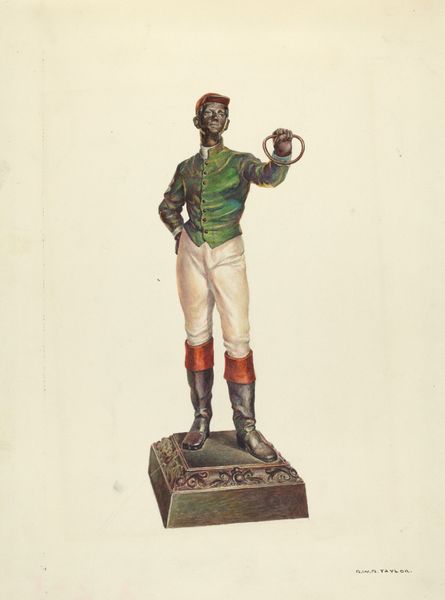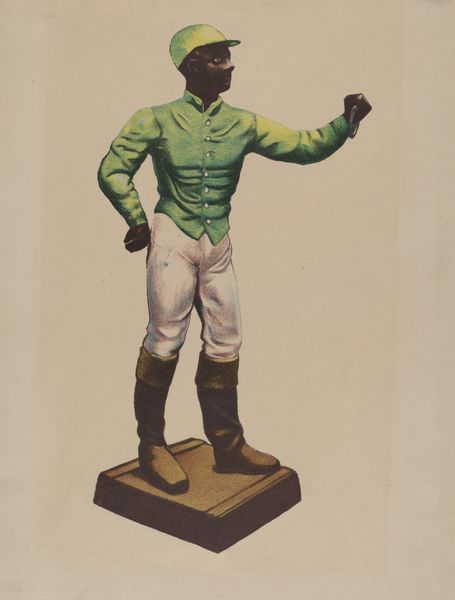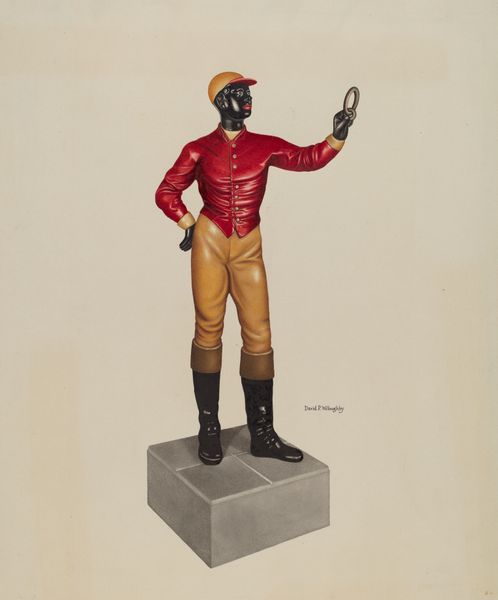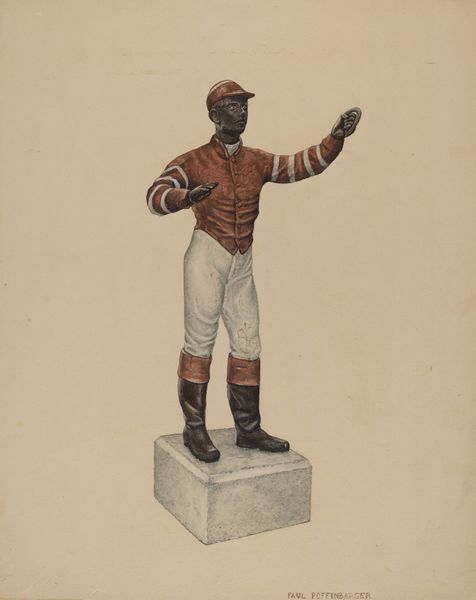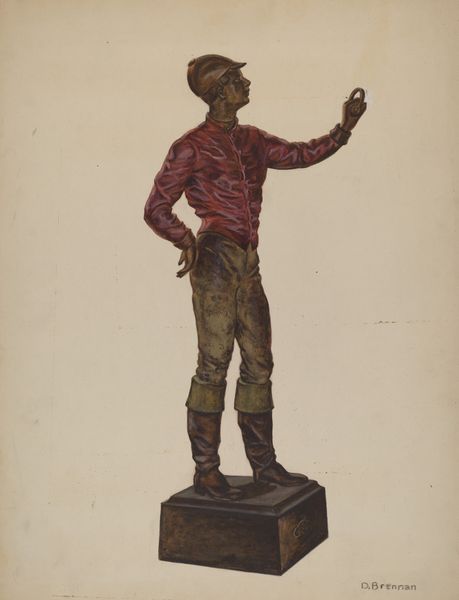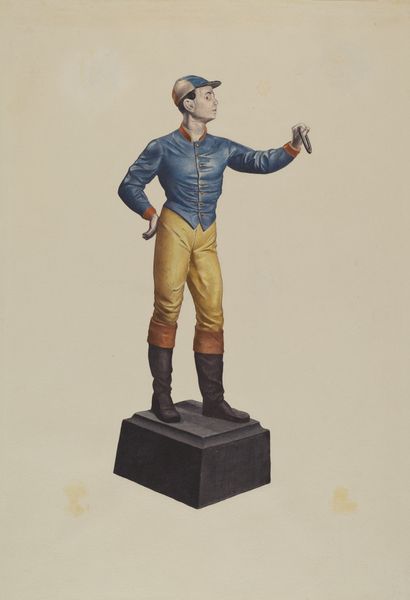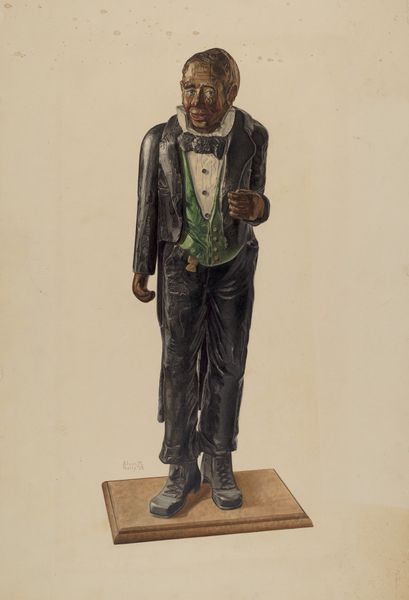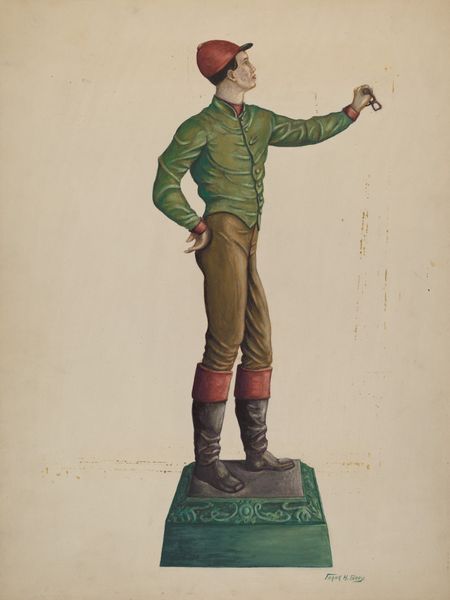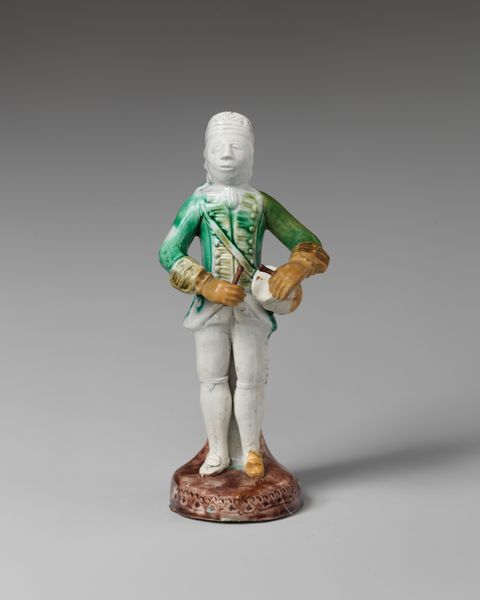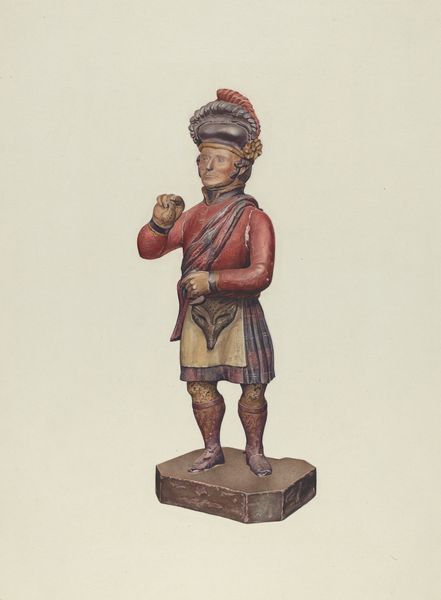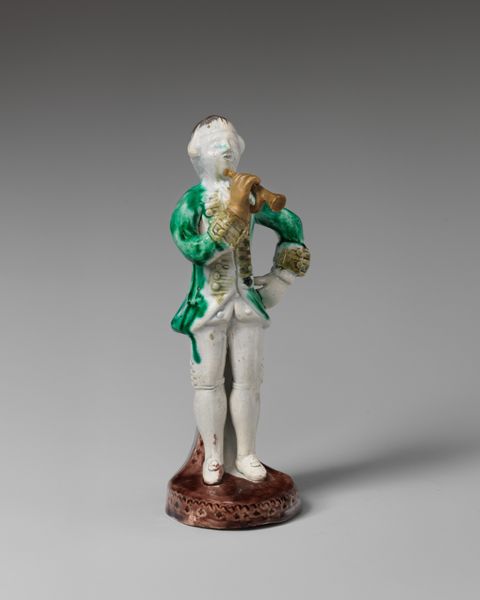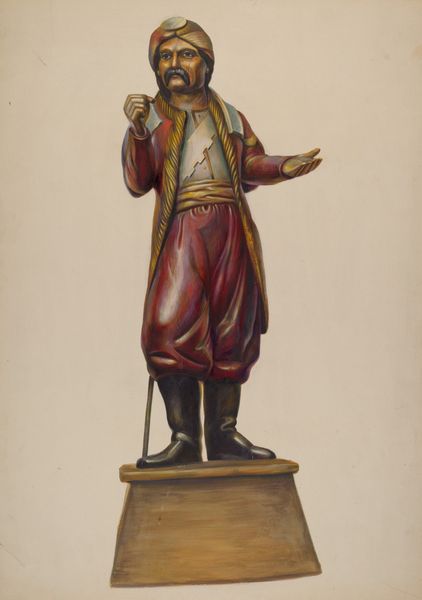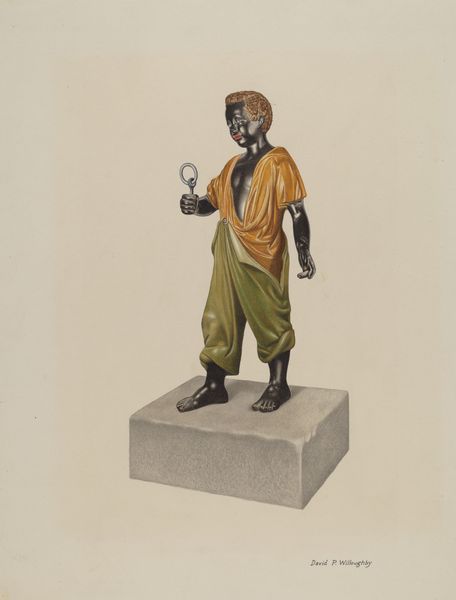
drawing, watercolor
#
portrait
#
drawing
#
charcoal drawing
#
figuration
#
watercolor
#
portrait drawing
#
watercolour illustration
#
watercolor
Dimensions: overall: 35.6 x 24.5 cm (14 x 9 5/8 in.)
Copyright: National Gallery of Art: CC0 1.0
Curator: Wow, isn't this something? The first impression, to me, is like a bittersweet echo of a bygone era. It feels… loaded, somehow. Editor: It is, isn't it? This is Robert W.R. Taylor's "Hitching Post," made around 1937, with watercolor and drawing—it depicts what was a very common lawn ornament, specifically of a Black jockey holding a ring. Curator: A lawn ornament. So much to unpack in that seemingly simple phrase. It's this image of servitude, presented almost like a whimsical piece of garden decor. It just feels incredibly unsettling. You know? The sort of eerie beauty masking something deeply troubling. Editor: Absolutely. We have to contextualize it. These statues, mass-produced from the mid-19th century onwards, often drew on caricatures, exaggerating features to create stereotypical representations of Black people. The fact they are 'holding' something signifies enslavement in a different way - offering up servitude or assistance. Curator: Right, this notion of perpetuated servitude... like a frozen gesture that carries an incredible amount of weight through time. What do you make of his attire and the ring he holds out? Is there any potential reading of resistance there or something? Editor: While there's always space for re-interpretation and finding agency, particularly in artwork made by Black artists, generally, the very creation and distribution of this object reinforced the racial hierarchy, where the Black figure is eternally fixed in a position of subservience. But, thinking more laterally...what strikes you most profoundly about it? Curator: Honestly, that this kind of imagery was not only accepted but cheerfully displayed on lawns. It’s that normalized othering... like a polite symbol of a brutal legacy, airbrushed for domestic consumption. Makes one consider the layers of subconscious bias that endure, right? Editor: Precisely. This work then invites us to confront those silences, to dissect the visual grammar that perpetuates stereotypes, and consider whose stories remain untold and untended. And how those silences shape the world. Curator: This is really just food for thought...or really just the starting point, and I love those unexpected revelations!
Comments
No comments
Be the first to comment and join the conversation on the ultimate creative platform.
